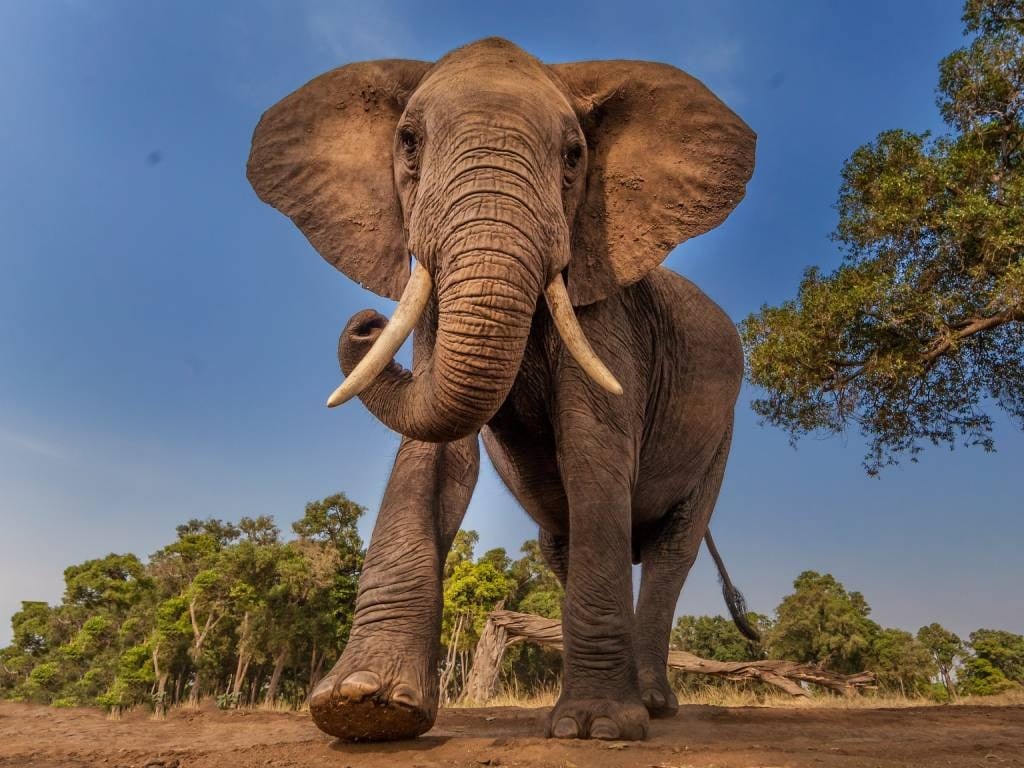

The mysterious deaths of elephants in Zimbabwe and Botswana have been attributed to a rare bacterium.
Manoj Shah/Getty Images
- Bisgaard taxon 45, an unnamed close relative of Pasteurella multocida, was behind the deaths of a large number of elephants in Zimbabwe in 2020.
- Scientists say the findings provide a window into the previously unknown part of elephants’ normal flora in Southern Africa.
- The researchers faced bureaucratic challenges and feared some cases could have been passed off as anthrax.
* This article has been updated below.
The deaths of three dozen elephants at the Hwange National Park and Victoria Falls in Zimbabwe in 2020 were due to a rare form of bacteria, scientists have finally established.
The findings were published in the peer-reviewed Nature Communications journal.
“Here we show evidence of the mortalities in Zimbabwe as fatal septicaemia associated with Bisgaard taxon 45, an unnamed close relative of Pasteurella multocida,” they wrote.
According to the researchers, early on in the inquiry, poaching and deliberate poisoning were ruled out.
Infectious diseases, environmental poisoning, poaching, and increasing habitat stress as a result of the ongoing drought and climate change were some other possible explanations ruled out.
To arrive at the findings, the researchers said, “We analysed elephant carcasses and environmental samples and failed to find evidence of cyanobacterial or other intoxication.
READ | Zimbabwe plans to send dead elephants’ brain tissue to US for toxin tests
“Post-mortem and histological findings suggest a bacterial septicaemia similar to haemorrhagic septicaemia caused by Pasteurella multocida.”
Earlier on, Pasteurella multocida was suspected to have been behind the deaths of the elephants.
In 2018, Pasteurella multocida was behind the deaths of 200 000 Kazakh antelopes in Kazakhstan.
It can also kill cattle, buffalo, chickens, and other animals.
Its presence in the Kavango-Zambezi (KAZA) transfrontier, which covers Zimbabwe, Botswana, Angola, Zambia, and Namibia, is of great concern.
This is because the area is home to the largest elephant population in Africa, estimated to be 227 900 as of 2022.
About 58% of the elephants are in Botswana and 29% in Zimbabwe.
Bisgaard taxon 45, the unnamed close relative of Pasteurella multocida, is a new phenomenon presenting new areas of study for scientists.
“The source of infection and route of transmission remains unknown in this outbreak. Bisgaard taxon 45 has been isolated from clinically healthy psittacines and may represent a previously unknown part of elephants’ normal flora in this region,” the scientists said.
Researchers suspect that some of the cases from the KAZA in the past might have been passed off as anthrax.
“Past cases may have been missed because, for mortalities that were suspected to be anthrax at the time of post-mortem examination, samples for histopathology or bacterial culture were not collected and therefore not available to test if the elephants were found to be negative for anthrax,” they said in their report.
They said their research faced bureaucratic challenges in both Zimbabwe and Botswana. They were unable to visit Botswana and instead relied on samples collected from dead elephants.
This could have led to the failure to identify Bisgaard taxon 45 earlier.
“It took 32 days to acquire permits to send samples to South Africa, and samples were only received at the laboratory eight weeks after collection, which is the likely reason for the failure to isolate Bisgaard taxon 45 there,” they wrote.
Bisgaard taxon 45 adds to a long list of health challenges that pose a threat to the elephant population in Southern Africa, such as “tuberculosis, anthrax, elephant endotheliotropic herpesvirus, encephalomyocarditis virus, floppy trunk syndrome, and malicious poisoning.”
* This article was corrected after publication to remove references that linked elephant deaths in Botswana to Bisgaard taxon 45. Researchers made no claim as to the cause of death of elephants in Botswana. News24 apologises for the error.
The News24 Africa Desk is supported by the Hanns Seidel Foundation. The stories produced through the Africa Desk and the opinions and statements that may be contained herein do not reflect those of the Hanns Seidel Foundation.
